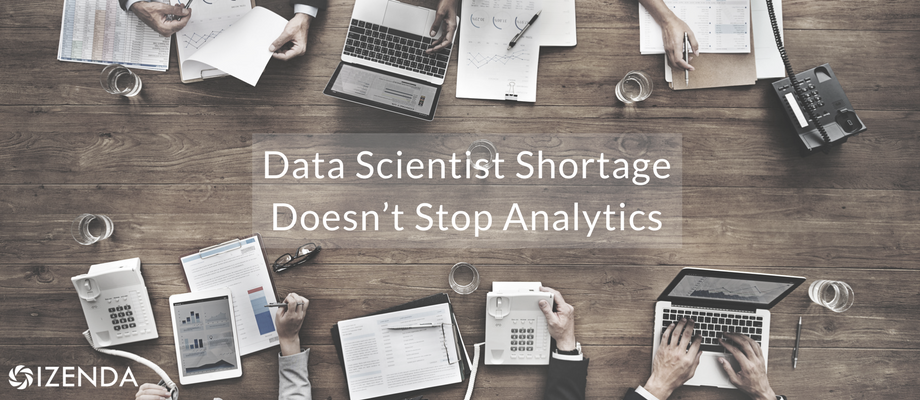
I keep reading about how the death knell has already sounded for any business intelligence solution that serves up less than predictive analytics. Machine learning, AI and IoT must be in play. But that looks like a ridiculous view to me when a vast number of businesses still use spreadsheets created by any and every employee who needs to examine company data.
Likewise, some industry pundits say every business needs to hire a data scientist. They’ve also been quick to point out the big shortage of data scientists, or at least skilled workers. So if a company wanted to hire one, they might find out even a recent college grad is out of their price range at this stage of their business.
Companies without effective analytics solutions still need descriptive analytics. If they’ve been using spreadsheets or a legacy BI tool with no data governance, they can’t trust the data they have. While traditional – old BI, I call it – won’t be enough for them, they don’t even have that to start.
What if the accounting department relies on a disparate set of spreadsheets to tell the CEO where the expenses are piling in, and what customers are sending payments? First, they need to add a modern business intelligence and analytics solution. (A wise executive or project manager plans for the future addition of predictive and prescriptive analytics. This might mean they can enable access for users to features that already exist on their modern analytics platform. Or that platform might have an open architecture that allows them to add those features.)
BI Delivers Competitive Advantage
Software companies work to deliver industry-specific solutions to problems their customers face. Research by Aberdeen Group shows that they need an analytics component to gain a competitive advantage. Does it need to include predictive and prescriptive elements from the get go? Probably not, but their customers more likely need ad hoc reports to understand their data.
73% of ISVs see the need for differentiation and competitive advantage as a top driver of embedded analytics. (Source: Next Generation Business Tools: Embedded BI at the Core, Aberdeen Group, November 2016)
But they do need more than charts from a BI solution that does less than Excel spreadsheets. They need reports that allow them to drill through the data to answer business questions. Data visualizations help reveal trends in the increasing volumes of data much easier than trying to look at rows in a spreadsheet. It’s important to use an analytics solution that enables drilling down and through the data visualizations also.
Data and analytics expert Mike Ferguson discussed the importance of BI and analytics in his blog. He relates how user adoption of BI tools by employees remains stuck around 22%-25%. In his view, self-service BI gets used at tactical levels of business, and not in everyday operations. He says attention given to big data and predictive analytics puts employees “even further away from front-line business operations.”
We’re talking about operational analytics here. This type of analytics explores real-time, or close to real-time, data to suggest ways to optimize existing business activities and to locate possible bottlenecks, leaks in efficiency, logistical and other problems.
Ferguson says the results from operational analytics impact daily business processes show the benefits of this type of analytics gains from the input of users of all levels within an organization – from the line of business users all the way to the C-suite. (Read more about operational analytics on Ferguson’s blog, Operational BI and Analytics in a Data Driven Enterprise.)
We’ve got a major surgical supply chain business application vendor as a customer. Their users need operational analytics to pick the correct surgical supplies out of a 15,000-plus item inventory. Most surgical procedures outside of the emergency department get scheduled, so the surgical supplies manager receives a list of required items in advance. They track those parts in real time, with new inventory ordered as needed. Delays in delivery to the operating room tie up as many as a dozen medical professionals. That may endanger a patient. So an operations manager uses Izenda’s analytics to view a daily report to check for trending problems. By drilling down on the dashboards, they trace the reasons for problems. The operations manager and the supply team explore real-time, or close to real-time, data to make these discoveries.
Best in Class Companies Lead the Way
According to Aberdeen Group, best in class companies are 59% more likely to have strong analytical skills within non-technical roles. (Source: See, Act and Execute: The Value of Operational BI, Aberdeen Group, July 2016). When users find direct value in the platform, they’re much more likely to adopt the use of analytics. This enables them to have a direct, positive impact on the business. And then bring on the machine learning, predictive analytics, AI and IoT later, when the business can make use of it.
To learn how Izenda can put ad hoc reporting and self-service BI into the hands of 100% of your application users, schedule a live demo with one of our embedded analytics specialists.

